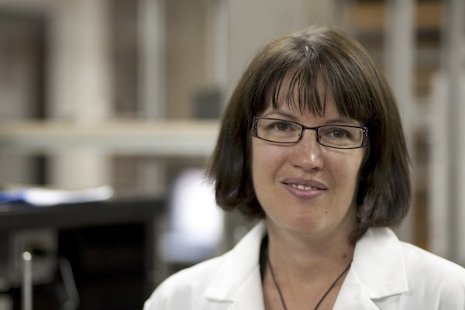Small, Mighty and Mysterious: Michigan Tech Researcher IDs Atmospheric Aerosols

There’s a lot more to the atmosphere than air. With every breath, we inhale a nearly invisible mish mash of tiny particles known as aerosols. From droplets of water and trace gases like sulfuric acid to specks of volcanic ash and industrial soot, aerosols usually go unnoticed. But they can be powerful, capable of destroying the ozone layer, shutting down air traffic, and morphing global climate.
For all their importance, aerosols’ true nature remains a mystery. They are made of countless substances, some solid, some liquid, some gaseous and some shifting in between. Plus, they are constantly entering and leaving the atmosphere, and, in the meantime, reacting chemically with the air, the oceans and each other.
Lynn Mazzoleni, an assistant professor of chemistry, uses advanced mass spectrometry techniques to take snapshots of aerosols, identifying their chemical composition and tracking their transformation over time. “There are hundreds to thousands of chemicals we can identify,” she says.
Mazzoleni’s work came into play in a study on organic aerosols published online Jan. 9 in Nature Chemistry, which she coauthored. Generally speaking, unoxidized carbon-based aerosols are dark and absorb heat from the sun’s rays, contributing to global warming. On the other hand, oxidized organic aerosols reflect the sun’s energy, creating a cooling effect. Thus, characterizing them is key to better understanding climate change as a whole. That’s a challenge, however, because aerosols are a moving target: there are thousands of different organic aerosols that can cascade down many different reaction pathways over their lifetimes.
Lead author Jesse Kroll of MIT showed that the atmospheric chemistry driving the oxidation of organic aerosols in a given area could be partially gleaned by determining their average oxidation state over time. His field measurements were corroborated by Mazzoleni’s more-precise mass spectrometry studies.
The researchers hope that this work will one day help scientists model some of the highly complex chemical systems involving aerosols. “Now, we don’t really understand how they evolve through time,” says Mazzoleni.
The paper, “Carbon Oxidation State as a Metric for Describing the Chemistry of Atmospheric Organic Aerosol,” is accessible on the Nature Chemistry website.
Michigan Technological University is an R1 public research university founded in 1885 in Houghton, and is home to nearly 7,500 students from more than 60 countries around the world. Consistently ranked among the best universities in the country for return on investment, Michigan's flagship technological university offers more than 185 undergraduate and graduate degree programs in science and technology, engineering, computing, forestry, business, health professions, humanities, mathematics, social sciences, and the arts. The rural campus is situated just miles from Lake Superior in Michigan's Upper Peninsula, offering year-round opportunities for outdoor adventure.




Comments